Introduction
The University of Camerino is a public university located in the Marche region of Italy. It has a long history and covers a wide range of disciplines, including humanities, science, engineering, etc. It is famous for its excellent teaching and research level, as well as its all-round support for students.
Overview
Student size: There are about 10,000 students on campus, of which international students account for about 10%, and the ratio of students to teachers is about 1:29.
Number of faculty and staff: more than 620 faculty and staff.
History
The history of the University of Camerino can be traced back to the Camerit School in the 13th century. At that time, it was the only higher education institution in the region that offered courses in civil law, canon law, medicine and literature.
On September 20, 1336, the papal nuncio Bertrando di di Deaux granted the city of Camerino the power to appoint art leaders, councilors and notaries of the papacy and the city council.
On January 29, 1377 On 18th, Pope Gregory XI authorized the university to grant bachelor's and doctoral degrees after proper review, allowing it to develop into a multidisciplinary comprehensive school.
In the middle of the 18th century, the university's diplomas were recognized throughout the Roman Empire.
On September 30, 1816, Pope Pius VII agreed to rename and temporarily restore the school.
On August 28, 1824, Pope Leo XII issued the "quod divina sapientia" bull, which finally determined the status of the university.
In 1827, the bull was fully implemented and the university's appearance was completely defined.
In 1861, after being annexed by the Kingdom of Italy, the university was declared "free" and became a state university in 1958.
Foundation time
Formally established in 1336.
School strength
Faculty: It has a highly qualified teaching team with a teacher-student ratio of about 1:29, ensuring that students can receive adequate attention and guidance.
Scientific research level: The school has carried out in-depth research in multiple disciplines, especially in natural sciences, medicine, law and other fields, and has achieved remarkable results. Its scientific research results have a certain influence in the academic community and have made positive contributions to promoting discipline development and social progress.
International cooperation: As a member of the European University Association (EUA), it actively participates in the Erasmus World Program of the European Commission, and forms the EUA-FRINDOC network with the University of Hong Kong, Stellenbosch University, Imperial College London, and the University of Bergen, coordinating and promoting European doctoral and university research education, providing students and teachers with broad international exchange and cooperation opportunities.
Institutional nature
Public university.
Educational philosophy
Focus on the close integration of teaching and scientific research, emphasize the cultivation of students' innovative and practical abilities, and is committed to providing students with high-quality and personalized education, so that students can achieve comprehensive success in academic, professional and personal development. At the same time, it pays attention to students' career development, actively promotes cooperation between the school and enterprises and institutions, provides students with internship and employment opportunities, and helps students better integrate into society.
Key laboratories and disciplines
Key laboratories: The school has a total area of 2 10,000 square meters of scientific research laboratories provide advanced equipment and good conditions for scientific research activities.
Advantageous disciplines:
Natural Sciences: It has strong strengths in disciplines such as biology, chemistry, and physics. The relevant professional courses and research projects it offers are widely recognized by students and the academic community.
Medicine: The School of Medicine and Surgery has a long history, high teaching and scientific research levels, and has made important contributions to the training of medical professionals.
Law: The School of Law has an important position in the field of legal education in Italy and has trained many outstanding legal professionals.
Veterinary Medicine: The veterinary medicine major of the School of Biological Sciences and Veterinary Medicine is also one of the school's advantageous disciplines, and has trained a large number of professionals in the field of animal medicine.
Faculty
The school has 7 colleges, namely the School of Architecture and Design, the School of Biological Sciences and Veterinary Medicine, the School of Pharmaceuticals and Health Products, the School of Law, the School of Science, the School of Engineering, the School of Economics, and the School of Humanities.
Ranking
In the 2021 Studocu World University Rankings, it ranks second in Italy and fourteenth in Europe.
In the 2019 U-Multirank international ranking, it ranks among the top 25 in the world in the field of international orientation, which is based on 96 countries. The university was selected from 1,700 universities (49 of which are in Italy), taking into account the areas of greatest interest to students, such as teaching, learning, knowledge transfer, orientation and research.
Expenses
Tuition fees: Public universities have relatively low tuition fees, which vary according to the major and degree level, and are generally around 1,000-3,000 euros per year.
Living expenses: Students spend about 800-1,200 euros per month on living expenses, including accommodation, food, transportation, etc.
Campus environment
Geographic location: The main campus is located in Camerino, Marche, east of central Italy, between the Adriatic Sea and the Apennines. It has a beautiful natural environment and convenient transportation, providing students with a quiet and comfortable learning and living environment.
Teaching facilities: The school has 10,000 square meters of classrooms, a 500-seat teaching library and 20,000 square meters of sports space, including 5,000 square meters of indoor activity rooms. In addition, it also provides special learning and living facilities for people with disabilities, providing good conditions for students' study, research and physical exercise.
Campus culture: As a university with With a history of more than 700 years, the University of Camerino has a rich campus culture and tradition. The school focuses on the all-round development of students and encourages students to actively participate in various club activities and cultural exchange activities, such as sports competitions, art exhibitions, academic lectures, etc., creating a strong academic atmosphere and active campus cultural life.
-
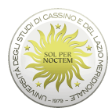
University of Cassino and Southern Lazio
-

University of Campania Luigi Vanvitelli
-
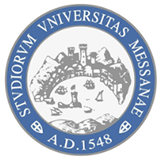
University of Messina
-
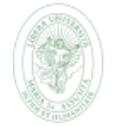
Libera Universita degli Studi Maria SS. Assunta di Roma (LUMSA)
-
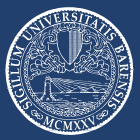
University of Bari Aldo Moro
-
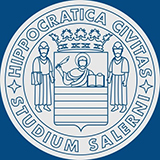
University of Salerno
-
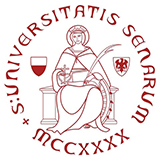
University of Siena
-
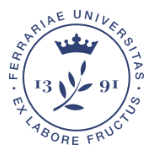
University of Ferrara
-
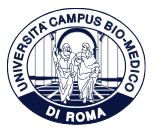
Campus Bio-Medico University of Rome
-

University of Genoa
-

Mesoamerican University
-

Istmo University
-

Mariano Galvez University of Guatemala
-

Regional University of Guatemala
-

Galileo University
-

Francisco Marroquín University
-

Rafael Landívar University
-

University of the Valley of Guatemala
-

University of San Carlos of Guatemala
-

Technological Institute of Tlaxcala Plateau
-

Golfo University
-

Technological University of South Sonora
-

Technological University of Huejotzingo
-

Tizimín Institute of Technology
-

Chilpancingo Institute of Technology

